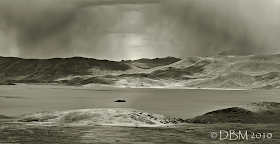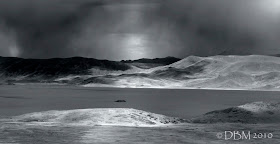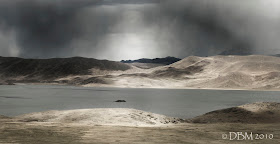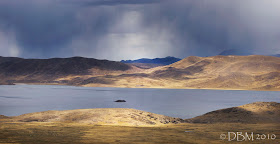











And since I seem to find it nearly impossible to write a post without some educational content, let's end with a few interesting facts about the prickly pear cactus. This particular one was photographed on one of the Galapagos Islands. On some of the islands, these cacti are fairly small and grow low to the ground. These islands tend to be wetter and more fertile and their resident tortoises have large domed shells which prevent the tortoise from stretching its head up very high - with all the food nice and low down, he doesn't have to. However, on some of the drier islands, the prickly pears grow into large "trees", with strong trunks holding their pad-like leaves well off the ground. On these islands, the resident tortoises have evolved saddle-shaped shells that allow them to stretch their heads up high to reach the lower cactus leaves. On all of the Islands, the prickly pear provides an important food source for many of the animals, not just the tortoises, inlcuding nectar for many of the islands different finch species.

The prickly pear is native to all of the Western hemisphere and is one of the most northern, cold tolerant species of cacti, managing to survive all the way into British Columbia, Canada. All prickly pear cacti belong to the genus Opuntia and they can make a tasty treat for humans as well as animals. To be honest, I might be lying here. I do know that you can eat various parts of the plant, but since I have never tried any part, I cannot say for sure that any part is actually tasty. Still, you can always give it a go. You can eat the fruits or the young leaf pads, but you will probably want to make sure that all of the spines have been removed first! In Mexico, the fruit is commonly called tuna, but I suspect that if I called "tuna" and my cats came running they would not be best pleased if I offered them catus fruit! The Mexicans and some South Americans also make use of the prickly pear to cultivate scale insects, from which red cochineal dye is produced.

And finally, since it seems to me that I cannot learn about anything biological without Mr. Charles Darwins' name popping up, I might as well tell you that he discovered that these cacti have thigmotactic anthers. That is just a fancy way of saying that their anthers (male bits that produce pollen), move when you touch them. Oooh eerr, missus! I think that I will say no more about male bits moving when you touch them.........
For more Macro Monday, go here.


For more macro Monday, go here.